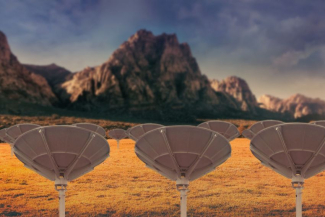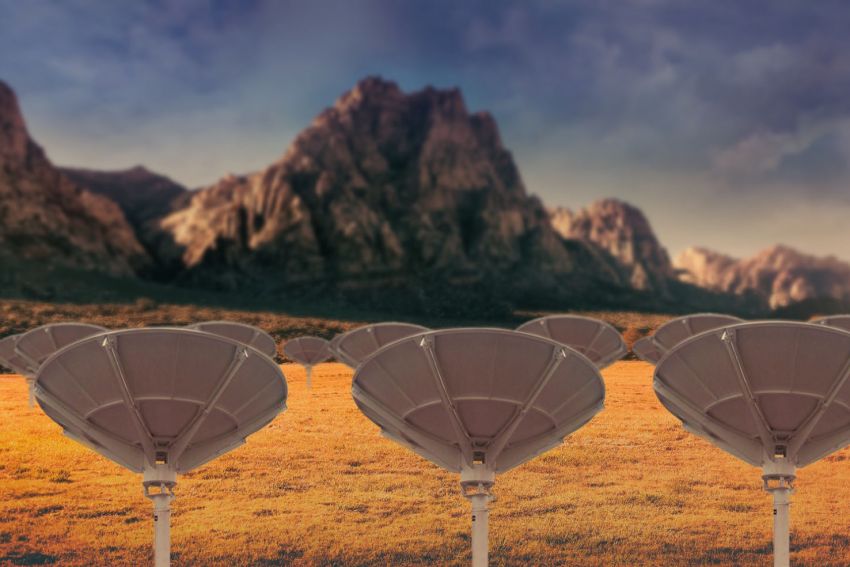ARGOS: a new window to the Universe

|
Announcement Date :
|
A European consortium of scientists, led by the FORTH Institute of Astrophysics, has succeeded in securing €3 million in European funding, to design a new state-of-the-art radio telescope and to develop cutting-edge technologies for the analysis of astronomical data.
ARGOS – the telescope to be designed – will significantly enhance the capabilities of existing astronomy infrastructures internationally, making key contributions to the study of the early Universe and to the understanding of phenomena such as black holes, gravitational waves, neutron stars and supernovae.

The three-year interdisciplinary programme is expected to generate a significant number of employment opportunities and make a decisive contribution to the training of young scientists in highly competitive fields such as gravitational wave astronomy, digital communications and data science. The study will culminate with the installation of a prototype radio telescope consisting of 16 parabolic antennas at the Skinakas Observatory in Crete. The prototype will be used to develop and test the innovative technologies required for ARGOS and will also significantly enhance the research and educational work of the Institute of Astrophysics.
Unlocking the violent Universe
Major advances in computer science in recent years have enabled the construction of astronomical "survey" telescopes that can simultaneously observe large parts of the sky with high speed and sensitivity.
"Astrophysics is undergoing a revolution thanks to these instruments," says Dr John Antoniadis, a researcher at the Institute of Astrophysics of FORTH and ARGOS’ principal investigator. "To date, radio astronomy, the branch of astronomy that deals with the recording of electromagnetic radiation at radio wavelengths, is not fully participating in this revolution. Although the need for a radio telescope with survey capabilities is urgent, the technological challenges to build one are great."
The funding secured by the team will enable the detailed design of such an instrument, the development of the digital technologies required for its operation, and the construction of a working 16-antenna prototype radio telescope in Crete.
Once constructed, ARGOS will enable the prompt detection of transient astronomical events such as supernovae, pulsars, neutron star mergers and fast radio bursts, providing automated alerts and high-quality data to scientists in real time.
Interferometry
To achieve its scientific goals, ARGOS needs to be able to monitor large parts of the sky at all times, with high speed, resolution and sensitivity.
"These capabilities are not easy to achieve simultaneously", explains Dr. Vassiliki Pavlidou, Professor at the Department of Physics of the University of Crete and a member of the team. "To increase sensitivity and resolution, one needs a telescope with a large collecting area. However, the larger a telescope is, the smaller its field of view – i.e. the area of the sky it monitors at any given time – becomes."
To overcome this obstacle, the team will rely on a well-known technique, called "interferometry", that allows several small telescopes to be used as a single instrument. The benefit is that while the large field of view is determined by the diameter of each smaller telescope, the sensitivity depends on their number, while the angular resolution by the physical distance between them. The major challenge with this technique is the large volume of data that must be analysed in real time. This is exactly where the design study will focus on.
The envisioned architecture offers additional advantages, such as low construction, maintenance and operation costs, scalability, modularity and sustainability. "We hope that these features, combined with our comprehensive design study, will make the construction of ARGOS in its complete form with hundreds of antennas an appealing investment for international funding agencies," says Dr. Vassilis Charmandaris, Professor at the Department of Physics of the University of Crete and Director of the Skinakas Observatory and the Institute of Astrophysics at FORTH.
The fact that the summit of Skinakas in Crete has been chosen as the place where this prototype radio telescope will be developed was also due to the strong support it has from the local community of the island. "Crete as a whole, and the Municipality of Anogeia in particular, have always supported the development of the infrastructure at Skinakas Observatory", pointed out the Mayor of Anogeia, Sokratis Kefalogiannis. "We are fully aware of the important benefits high level education, cutting edge research and technology has for our island and we do our best to assist the hard work of the scientists."
Interdisciplinary Effort
ARGOS will be a European research infrastructure of international interest that will provide answers to key scientific questions, in time-domain multimessenger astrophysics. The project will be implemented by an international team with significant interdisciplinary experience.
The FORTH Institute of Astrophysics, in addition to coordinating the project, will lead the scientific studies and simulations required to design and optimise ARGOS in its complete form, and develop new algorithms for the analysis of the data it will collect.
The Telecommunications and Networks Laboratory of the FORTH Institute of Computer Science (ICS), under the responsibility of Dr. Nikolaos Petroulakis, will coordinate the environmental characterisation of the various candidate sites for the installation of the telescope, focusing on the systematic recording of terrestrial radio interference that may significantly affect the telescope's performance. It is noted that priority will be given to sites in Crete which, due to its unique location and geography, offers an ideal place for the installation of such an infrastructure.
The design of the computational infrastructure will be led by the Digital Signal Analysis Laboratory of FORTH-ICS under the supervision of Dr. George Tzagkarakis. Software development for the interferometric combination of the signals will be carried out by the Max-Planck Institute for Radio Astronomy in Bonn, Germany, under the coordination of Dr. Ewan Barr and Dr. Gundolf Wieching.
The Telecommunication Systems Laboratory of the Department of Digital Systems at the University of Piraeus will design the instrument’s receivers and antennas, and coordinate the development of the telescope control system. The team is led by Professor Dr. Thanasis Kanatas, head of the laboratory.
Finally, the team of the distinguished researcher Dr. Jean-Luc Starck at CEA/Saclay, France, will develop artificial intelligence algorithms for early and automated detection of phenomena in the data collected by the instrument. It is worth noting that Dr. Starck has recently been awarded the "ERA" Chair in Astroinformatics at FORTH-ICS which will serve as a catalyst for the development of a parallel activity on topics common to ARGOS.
